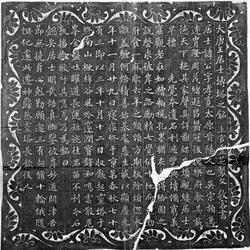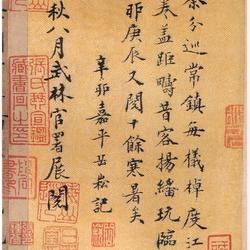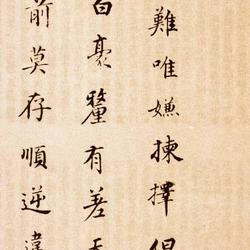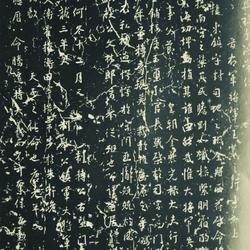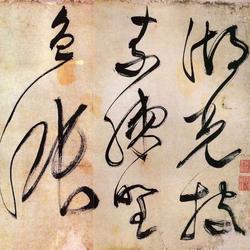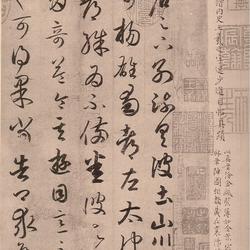Cai Jing, whose courtesy name was Yuan Chang, was born in Xianyou (now Xianyou, Fujian Province). He was a Jinshi in the third year of Xining (1070). First he was a local official, and later he became a member of Zhongshushe. He changed his position to Longtuge and became known as Kaifeng Prefecture. In the first year of Chongning (1102), he served as the right servant and minister (right prime minister), and later became the grand master. Cai Jing served as prime minister four times for a total of seventeen years. He was the first person in ancient and modern times to rise and fall. Cai Jingxing participated in the battle of Huashi Gang; he changed the salt method and tea method, and cast ten coins. At the end of the Northern Song Dynasty, Chen Dong, a student of the Imperial College, wrote a letter calling Cai Jing "the leader of the six thieves". After Song Qinzong ascended the throne, Cai Jing was demoted to Dan'er and died in Tanzhou (now Changsha, Hunan) on the way. There are biographies in Volume 101 of "Dongdu Shilue" and Volume 472 of "History of Song Dynasty". Cai Jing is a famous power traitor in history.
Cai Jinggong first learned calligraphy from Cai Xiang with his younger brother Cai Bian. When he was awarded the rank of Qiantang County Lieutenant as a junior sergeant, Shenzong liked Xu Hao's calligraphy, and the scholar-officials at that time studied it one after another. Cai Jing also studied Xu Hao's calligraphy with Su Shi, who was demoted to Qiantang, and later studied calligraphy. Master Shen and Ouyang Xun then changed their studies to the "Two Kings" and learned from the strengths of other schools to form their own body. His calligraphy is charming, bold and vigorous, cheerful and calm, and has a unique style.
Cai Jing's calligraphy art is characterized by grace, boldness, joy and calmness, and can embody the "Shangyi" calligraphy aesthetics of the Song Dynasty. Therefore, he already enjoyed a high reputation at that time, and many people in the government and the public studied his calligraphy. Zongyi of the Yuan Dynasty once quoted a commentator at the time in his "History of Calligraphy" as saying: "His writing is strict but not formal, and his writing is relaxed but not outside the rules. His formal writing is like a gentleman with a crown and sword, discussing in the temple; his running writing is like that of a noble prince, with high spirits and high spirits. The brilliance shoots people; the large characters are unparalleled in ancient and modern times, and there are few couples." It can well reflect Cai Jing's status in the art of calligraphy at that time. When people at that time talked about his calligraphy, they often used words such as "unparalleled" and "unmatched". Even the arrogant Mi Fu once said that his calligraphy was not as good as Cai Jing's. In fact, Cai Jing's calligraphy is more lively than calm, aggressive and less subtle.
There were four major calligraphers in the Northern Song Dynasty: Su, Huang, Mi and Cai. Some people believed that "Cai" originally referred to Cai Jing, but later generations changed it to Cai Xiang because of his "evil character". However, regarding Cai Jing's calligraphy, most of them quoted the "Xuanhe Shupu" compiled when Cai Jing was in great demand and the descriptions in "Tieweishan Congtan" written by his youngest son Cai Sui. The "Xuanhe Shupu" praised Cai Jing, and even It is believed that Jing is more elegant than Xiang. Regarding the origin of Cai Jing's calligraphy, the records in "Tiewei Shan Cong Tan" are more credible. From this, it can be seen that Cai Jing's calligraphy is between Su and Mi. When Cai Jing was in his heyday, the world was full of Cai style, but justice is in the hearts of the people. Today, apart from the inscriptions and postscripts that have been preserved with the addition of Ji, Cai Jing's ink writings only include "Jie Fu Tie" and "Gong Envoy Tie", both of which are on rulers. Although Su and Huang Even after being destroyed by the ban, there are still many handed down, which can illustrate the eternal truth passed down from person to person.
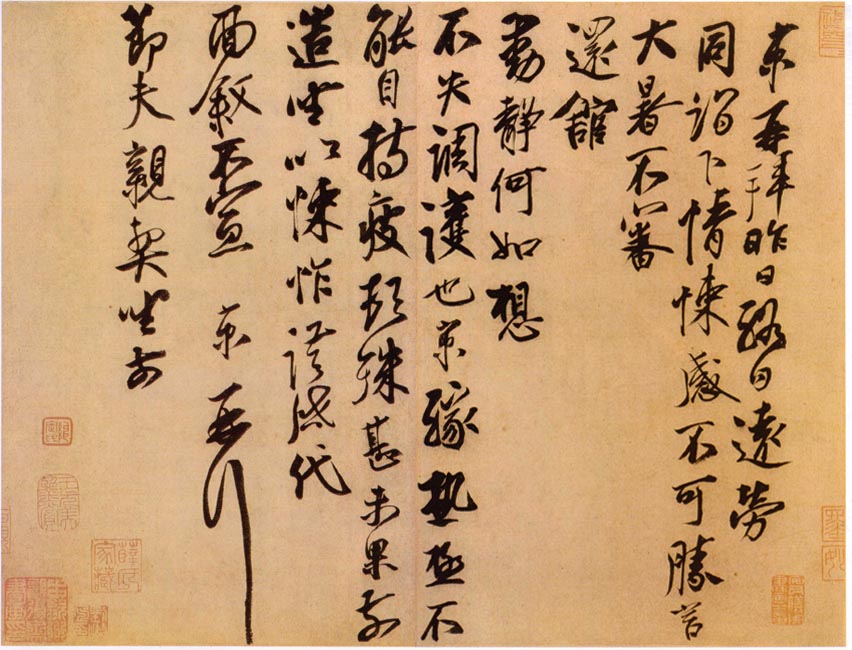
"Jie Fu Tie" running script on paper, 32.3×42.3cm, collected by the National Palace Museum, Taipei
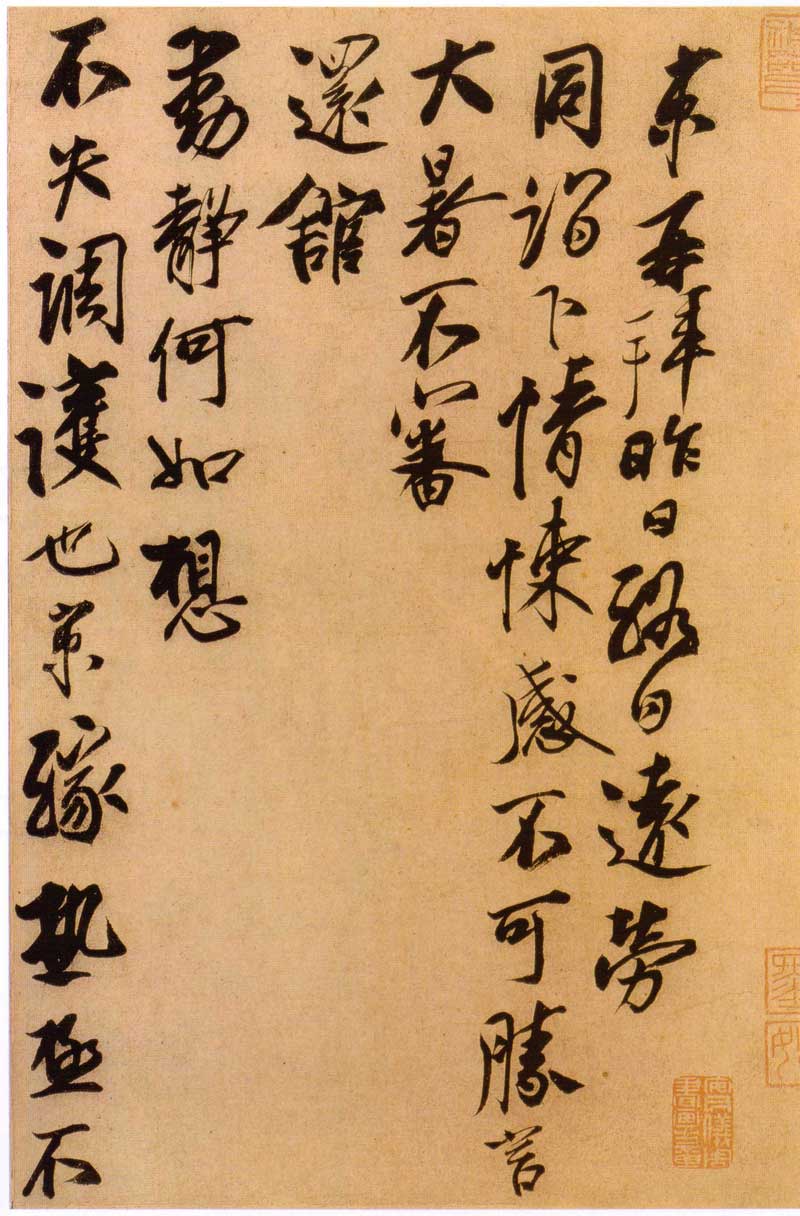
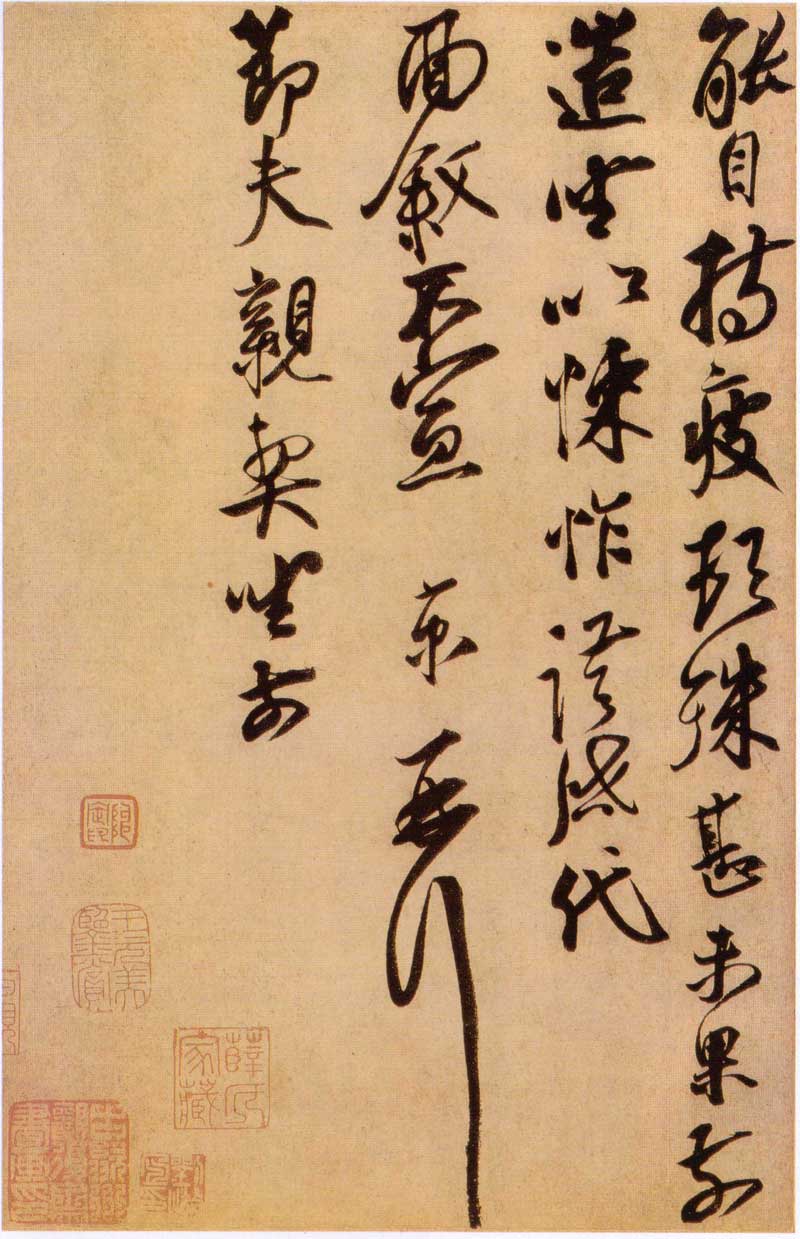
"Jie Fu Tie", the full name is "Jie Fu Tie". Album. Contains the fourth chapter of the third volume of the Dharma Book of the Song Dynasty. This work is on paper, ink. Length 32.2 cm, width 42.3 cm. Running script. This post has been circulated for a long time, and has connoisseurship marks, such as "miraculous", "momiao", "Zhang of An's Yizhou calligraphy and painting", "appreciation of Wang Yuanmei", "Xue's family collection", etc.
The calligraphy of this calligraphy is similar to that of Mi Fu, one of the four masters of calligraphy in the Northern Song Dynasty. His writing is vigorous and his momentum is extraordinary. Although his calligraphy is similar to that of Mi Fu, judging from his charming brushwork, he started from the calligraphy of the Tang Dynasty and traced directly back to the "Two Kings". From this calligraphy, his delicate brushwork and strong posture can be clearly seen. The brush strokes are natural but not indulgent in an elegant style; in terms of knotting, the strokes of each word are of different weights, which are natural; the beginning and end of the pen echo each other, creating a diverse and unified font; in terms of line layout, every word and line is carefully arranged , to obtain echoes from before and after while looking left and right, and achieve a vivid state of charm. What must be explained here is that Cai Jing's higher calligraphy attainments should be given a certain status, and his calligraphy should never be discarded based on people. His calligraphy should be evaluated objectively.
Explanation:
Goodbye, Jing. Yesterday, I worked hard all day long
Same achievement. Feelings of horror. Indescribable.
Great heat. No trial
Return to the hotel
How's the movement? think
It’s not out of control. It’s extremely hot in Beijing. No
Be self-sustaining. Very tired. before failure
Create sitting times. Horrible. Sincerely
Face to face. Not announced. Goodbye, Jing.
Jiefu sits in front of him.

